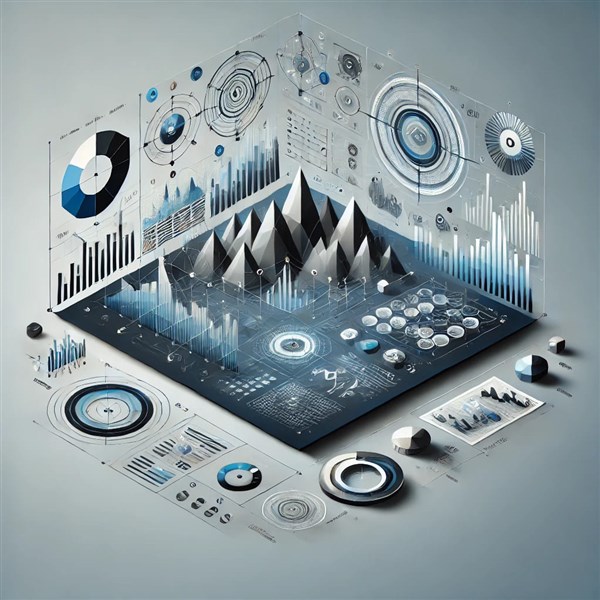We're open through the holidays to support your upskilling goals — book your session today!
We're open through the holidays to support your upskilling goals — book your session today!
Unable to find what you're searching for?
We're here to help you find it
In today’s data-driven world, businesses, developers, and DevOps engineers rely on Grafana for real-time monitoring, visualization, and analytics. With its open-source flexibility, multi-source data integration, and powerful dashboarding capabilities, Grafana has become a leading tool for observability and performance monitoring.
Grafana is evolving with new features, integrations, and AI-driven analytics. In this blog, we’ll explore the future of Grafana, the key trends shaping its development, and how businesses can leverage Grafana analytics for better decision-making and automation.
AI and machine learning-driven analytics are becoming more critical in observability platforms like Grafana. Companies are looking for predictive analytics, anomaly detection, and AI-driven insights instead of just reactive monitoring.
✔ AI-Powered Anomaly Detection – Automatically identifying performance anomalies in infrastructure.
✔ Smart Alerts & Recommendations – AI-driven thresholds and predictive alerts for DevOps teams.
✔ ML-Based Forecasting – Using historical data to predict trends in performance, system health, and user behavior.
Prediction: By 2026, AI-powered analytics will be a core feature in Grafana, helping businesses shift from reactive to proactive monitoring.
With the rise of AWS, Azure, and Google Cloud, businesses are moving to serverless architectures and microservices. Grafana is adapting by providing deeper cloud integrations.
✔ Grafana Cloud Monitoring – Enhanced real-time dashboards for AWS CloudWatch, Azure Monitor, and Google Cloud Operations.
✔ Serverless Performance Tracking – Improved monitoring of Lambda functions, Kubernetes, and containerized workloads.
✔ Multi-Cloud Observability – Unified monitoring across multi-cloud environments.
Prediction: By 2025, cloud-based Grafana adoption will outpace on-premise Grafana deployments, as enterprises shift to hybrid and multi-cloud strategies.
Traditionally, Grafana was focused on visualizing metrics, but modern observability requires a unified view of logs, traces, and metrics.
Upcoming Observability Trends in Grafana
✔ Deeper Integration with Prometheus, Loki, and Tempo – A single platform for logs, metrics, and traces.
✔ Distributed Tracing for Microservices – Enhancements in Grafana Tempo for better root-cause analysis.
✔ Automated Correlation Across Logs, Metrics & Traces – AI-driven insights to connect the dots between different data sources.
Prediction: By 2026, Grafana will become a full-fledged observability platform, competing directly with Datadog and Splunk.
The rise of Internet of Things (IoT) devices means massive amounts of real-time sensor data. Businesses need a scalable and lightweight analytics solution, making Grafana a perfect fit.
✔ Low-Latency Data Processing – Handling millions of real-time IoT data points efficiently.
✔ Edge Device Monitoring – New plugins for monitoring edge computing networks.
✔ Lightweight Grafana Deployments – Optimized Grafana instances for IoT gateways.
Prediction: By 2027, Grafana will be widely adopted in smart cities, industrial IoT, and autonomous vehicle monitoring.
Traditionally, setting up Grafana dashboards required query writing, database integration, and manual configuration. The future of analytics is no-code, making Grafana dashboards more accessible to non-technical users.
✔ Drag-and-Drop Dashboard Builder – Simplified UI for creating dashboards without queries.
✔ Prebuilt Analytics Templates – Ready-to-use dashboard templates for DevOps, Finance, and Sales.
✔ AI-Driven Query Generation – Automating SQL and PromQL queries with natural language inputs.
Prediction: By 2025, 50% of Grafana users will be business analysts and non-technical users, thanks to no-code features.
With GDPR, SOC2, and ISO 27001 compliance becoming mandatory, companies need secure analytics tools. Grafana is focusing on enterprise-grade security enhancements.
✔ Role-Based Access Control (RBAC) Improvements – More granular user permissions.
✔ Audit Logging & SIEM Integration – Tracking all user actions in Grafana for compliance.
✔ Data Masking & Encryption – Protecting sensitive analytics data from breaches.
Prediction: By 2026, Grafana will be used in security analytics, competing with Splunk and IBM QRadar.
Traditionally, Grafana has been used for monitoring IT infrastructure, but businesses are adopting it for real-time business analytics.
✔ Advanced Data Visualization – More chart types, interactive graphs, and AI-driven insights.
✔ SQL-Based BI Dashboards – Better support for PostgreSQL, MySQL, and ClickHouse analytics.
✔ Enterprise Reporting & Scheduled Alerts – Competing with Tableau and Power BI for business analytics.
Prediction: By 2027, Grafana will be widely adopted as a business intelligence tool beyond just DevOps.
Conclusion: The Future of Grafana is Bright
Grafana is evolving beyond a DevOps monitoring tool into a full-fledged observability and business analytics platform. With trends like AI-driven insights, cloud-native monitoring, IoT analytics, and real-time BI, Grafana is set to redefine the future of data visualization.
Whether you're a developer, data analyst, or business leader, learning Grafana analytics will be a highly valuable skill in the years ahead.
At Koenig Solutions, a leading IT training company, we offer comprehensive Grafana analytics training courses tailored to your needs. Our expert instructors guide you through every aspect of Grafana, helping you master this robust tool and prepare for the future trends in data analytics.

Aarav Goel has top education industry knowledge with 4 years of experience. Being a passionate blogger also does blogging on the technology niche.










